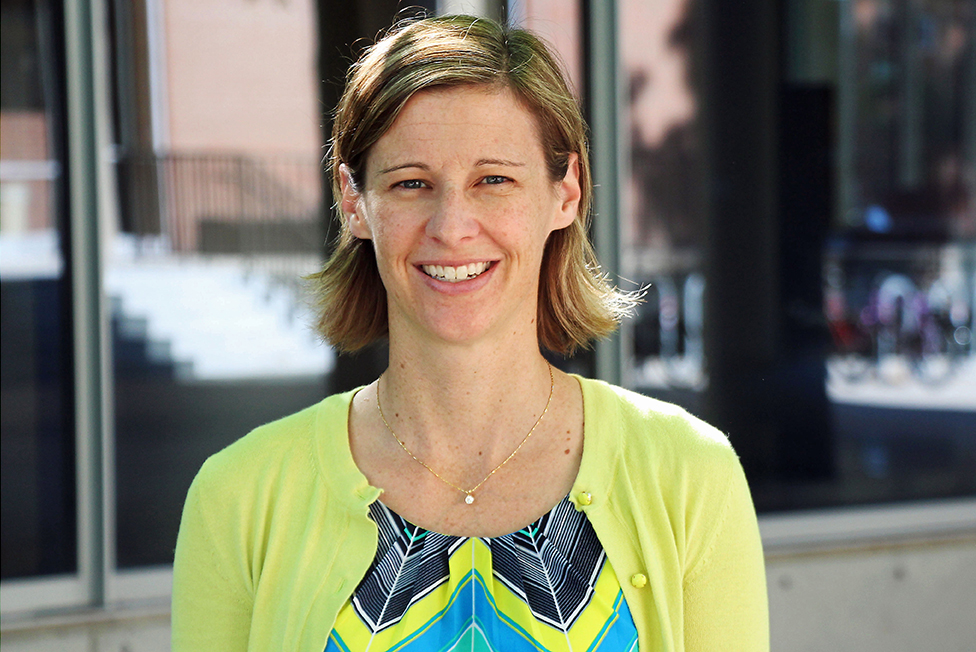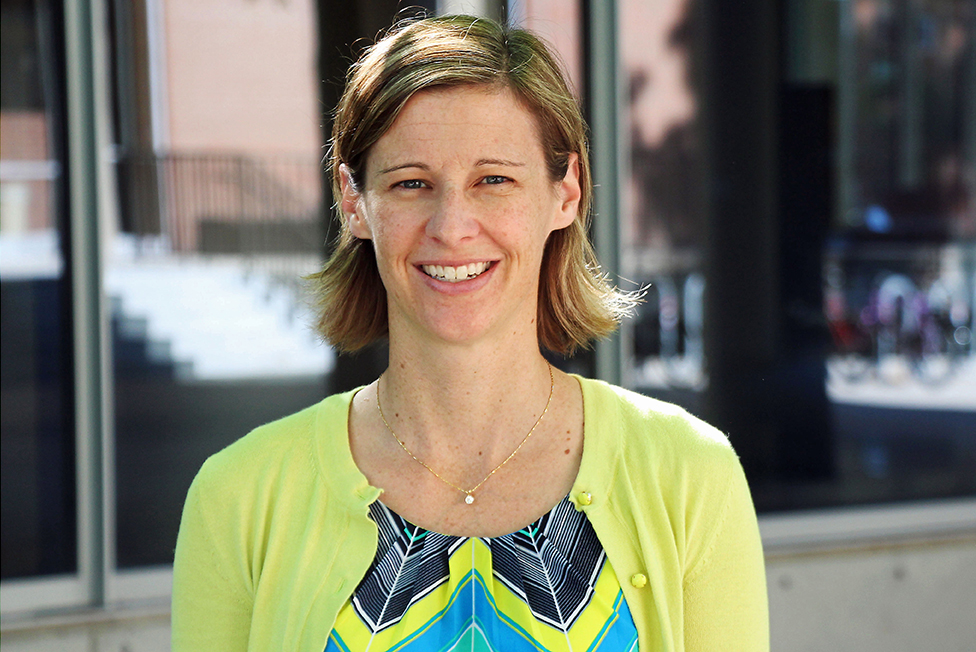Jennifer M. Heemstr
a
Use the force – the noncovalent forces that drive molecular recognition and self-assembly of nucleic acids are the key to the fantastic architectures produced by the Heemstra group. Jen is currently an Assistant Professor at the University of Utah.
- Date of birth: 25 January 1978
- Position: Assistant Professor of Chemistry, Deputy Director of the Center for Cell and Genome Science, University of Utah
- E-mail: jen.heemstra@utah.edu
- Homepage: http://chem.utah.edu/directory/heemstra/research-group/index.php
- Education: BS 2000, University of California, Irvine, CA
PhD 2005, University of Illinois, Urbana-Champaign (with Jeffrey S. Moore, Thesis title: Folding-Promoted Reactivity and Tunable Structure of Pyridine-Containing m-Phenylene Ethynylene Helical Cavitands)
Postdoc 2007–2010, Harvard University (with David R. Liu)
- Awards: Army Research Office Young Investigator Award (2011), Myriad Award of Research Excellence (2015), Cottrell Scholar Award (2015), NSF CAREER Award (2016), W.W. Epstein Outstanding Educator Award (2016)
- Current research interests: The central theme of our research is understanding and harnessing the molecular recognition and self-assembly capabilities of nucleic acids. Organic chemistry plays a critical role in all of our projects, as we use synthetic chemistry to build the nucleic acids we want to study, and we apply the principles of physical organic chemistry to understand how these nucleic acids interact with each other and with analytes such as small molecules and proteins. From there, we are able to pursue applications in a wide variety of fields including biocatalyst development, bioimaging, cancer biomarker discovery, water toxin detection, and drug delivery.
- Hobbies: Rock climbing, biking, running, snowboarding, playing soccer or Legos with my kids, drinking wine
|
iOS or Android? … iOS. I wish I could say “neither” but I’m constantly on my iPhone or iPad.
The holygrail in modern chemistry is … inventing technologies that improve human health and protect our environment.
The biggest problem that young scientists face is … learning how to be bold and take risks at a time when jobs and funding are scarce.
I chose chemistry as a career because … I had fantastic mentors.
If I were not a scientist, I would be … an unemployed rock climber.
My most exciting discovery to date has been … that we can use DNA biosensors to measure small molecule enantiopurity in very high throughput.
The most important thing I learned from my parents is … life is short, so make sure that you are having fun.
The most important lesson I learned from my PhD supervisor is… recruit creative and self-motivated people to your lab, view them as your colleagues, and give them everything they need to do brilliant work.
If I could change one thing in my scientific career, I would … have overcome my fear of failure much earlier.
I always wanted to learn how to… dance. I “practice” by playing Dance Central on my Xbox, but I still have no rhythm.
The first thing that comes to mind when I think back to my college days is … working tons of hours in the lab because I loved research so much, and not having any clue that this was shaping my future career path.
Something my students would be surprised to learn about me is that I … often feel very awkward in social situations.
The most surprising thing I’ve realized since starting my career in academics is … that I LOVE teaching!
A good day begins with … a cup of coffee and joking around with my husband and kids.
My favorite author or book is … Bossypants by Tina Fey. |
My 3 top papers:
- “Small-Molecule-Dependent Split Aptamer Ligation,” A. K. Sharma, J. M. Heemstra, J. Am. Chem. Soc. 2011, 133, 12426–12429.
In this paper, we demonstrated that small-molecule binding could be used to direct the templated ligation of DNA split aptamer fragments. This work laid the groundwork for the development of more robust and sensitive aptamer-based assays, and it was our lab’s first exploration into the power of covalently trapping non-covalent assembly events.
- “Fluorescent RNA Labeling Using Self-Alkylating Ribozymes,” A. K. Sharma, J. J. Plant, A. E. Rangel, K. N. Khoe, A. J. Anamisis, J. Hollien, J. M. Heemstra, ACS Chem. Biol. 2014, 9, 1680–1684.
Here we carried the theme of covalent trapping over to RNA by evolving ribozymes capable of binding to a reactive fluorophore and catalyzing self-alkylation. While a number of non-covalent approaches to fluorescent RNA labeling had been reported, our work provided the first sequence-specific covalent approach. We are excited to now adapt these self-alkylating ribozymes for use in living cells.
- “High-Throughput Enantiopurity Analysis using Enantiomeric DNA-Based Sensors,” T. A. Feagin, D. P. V. Olsen, Z. C. Headman, J. M. Heemstra, J. Am. Chem. Soc. 2015, 137, 4198–4206.
This paper was the realization of an idea we had when the lab first started – that through the principle of reciprocal chiral substrate selectivity, we could use DNA biosensors for high-throughput measurement of small-molecule enantiopurity. We have a few more steps to bring our “big picture” idea to reality, but we envision that this method could change the way that we evolve enzymes for the stereoselective synthesis of high-value chemicals.
|


